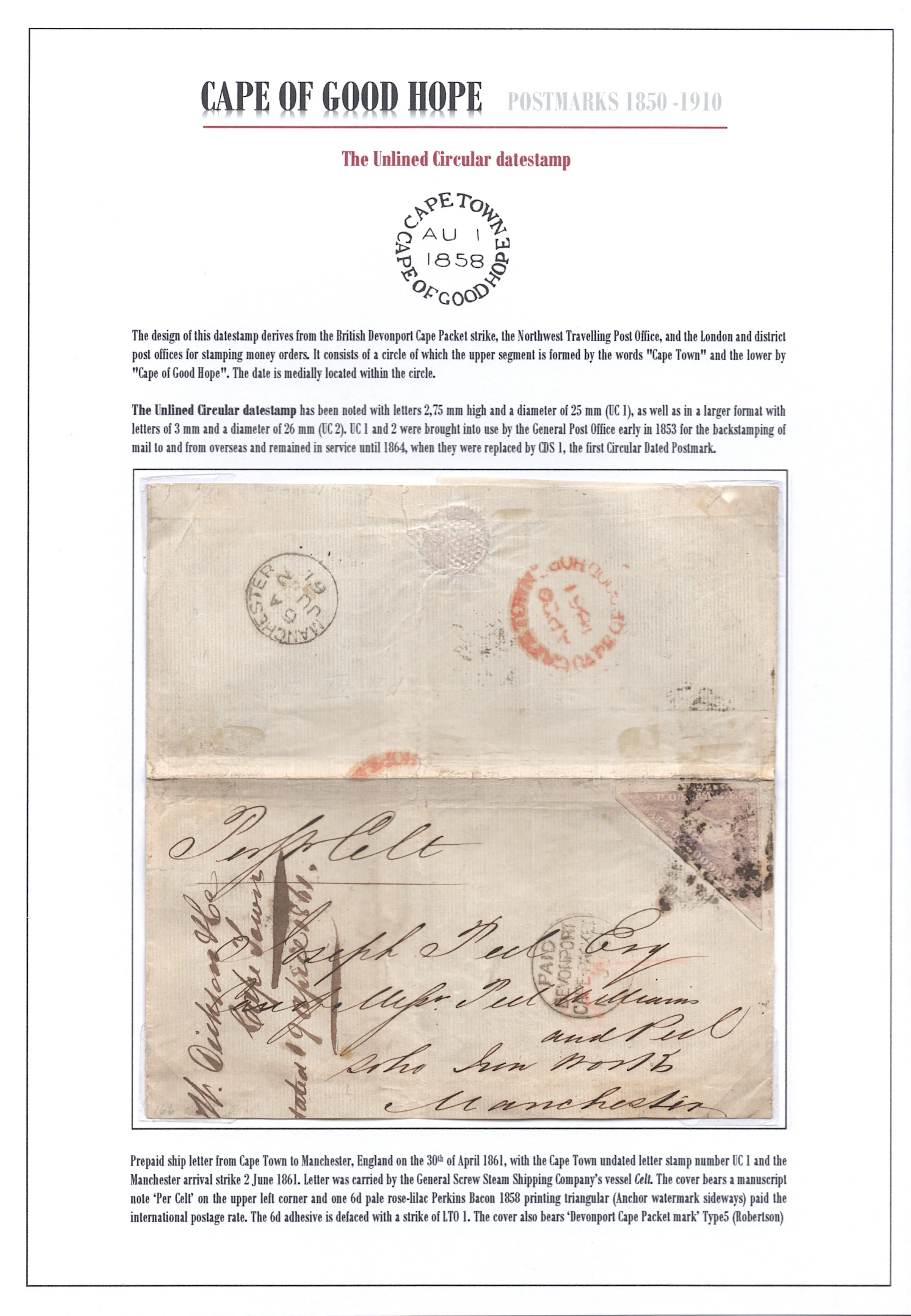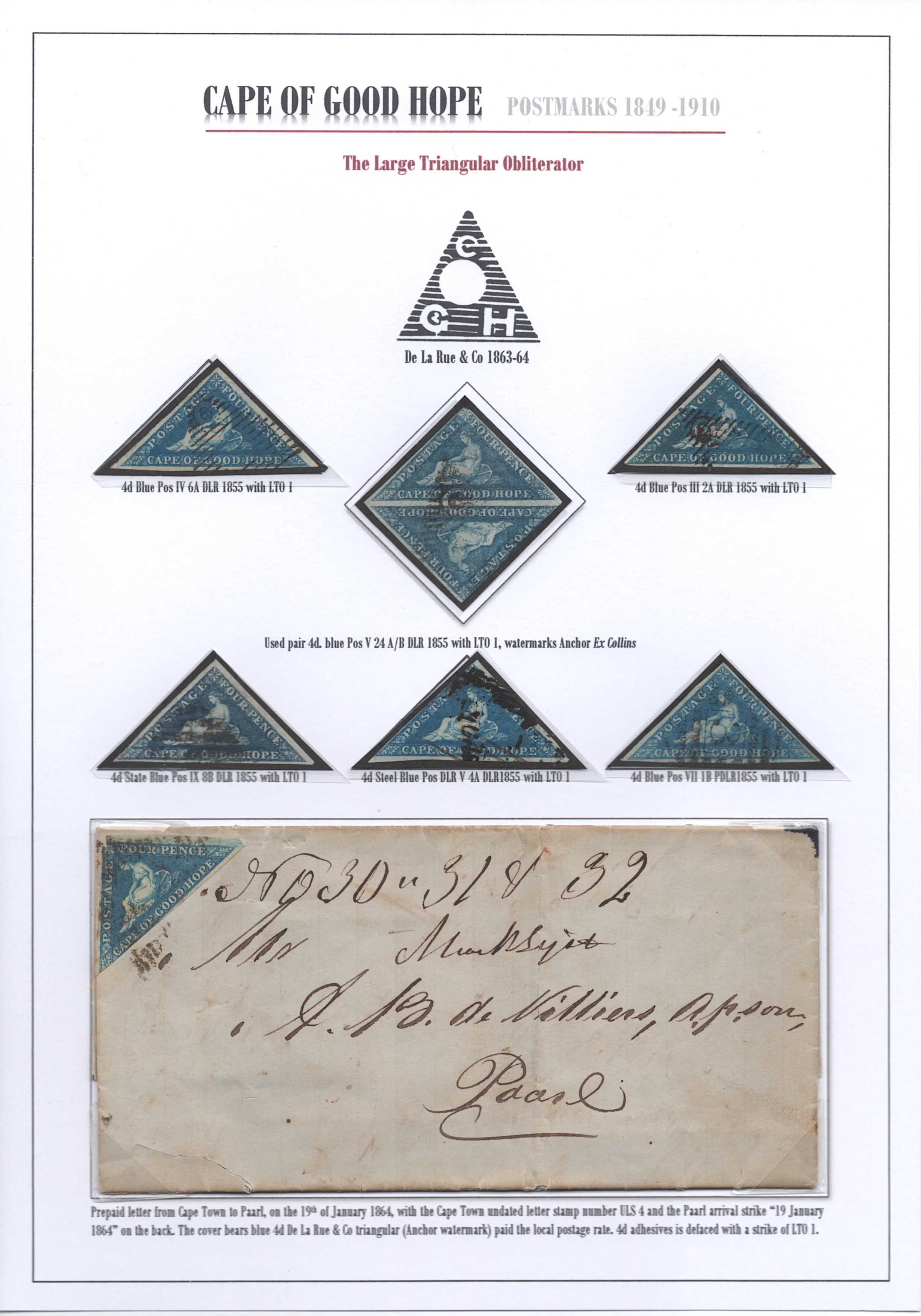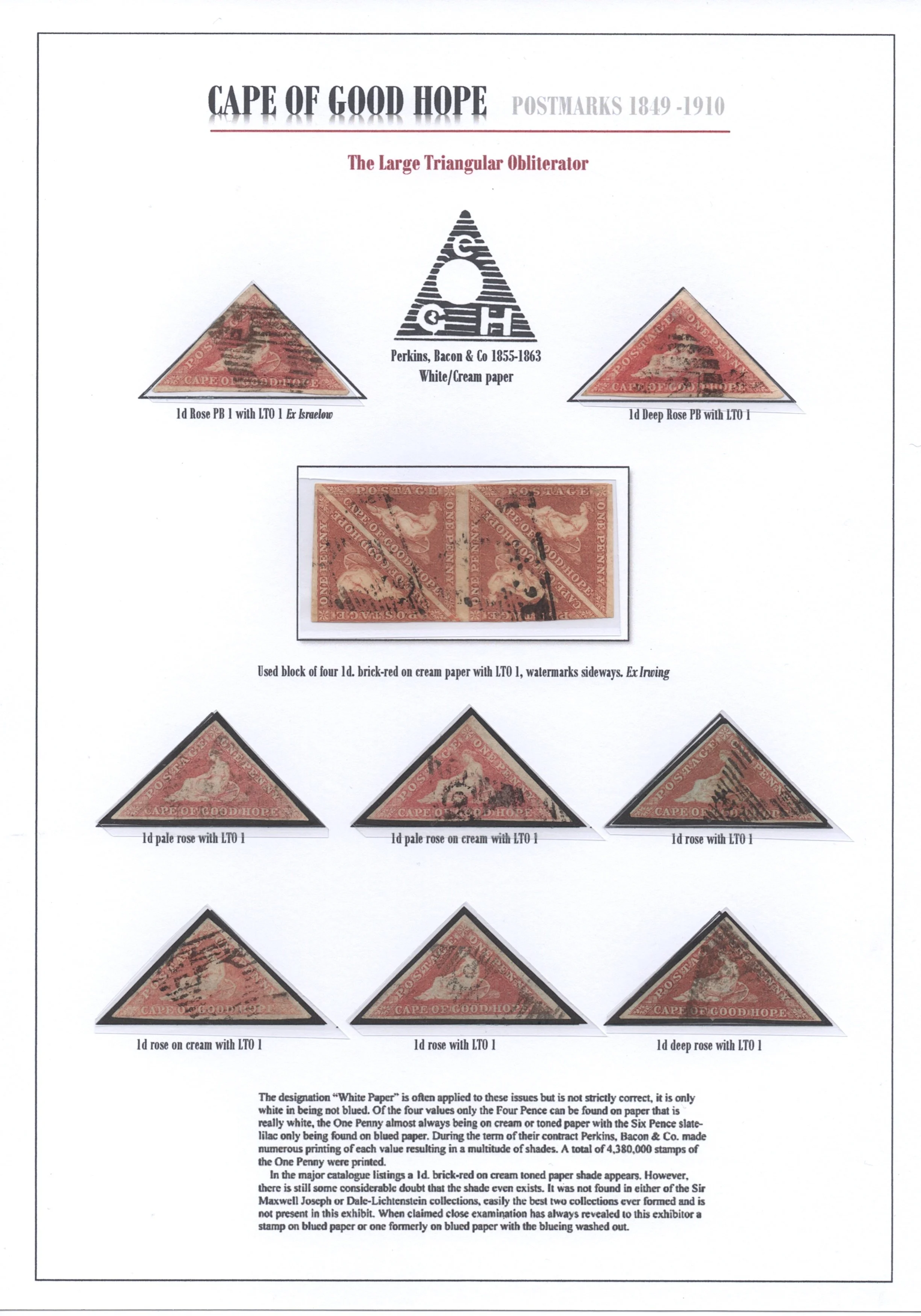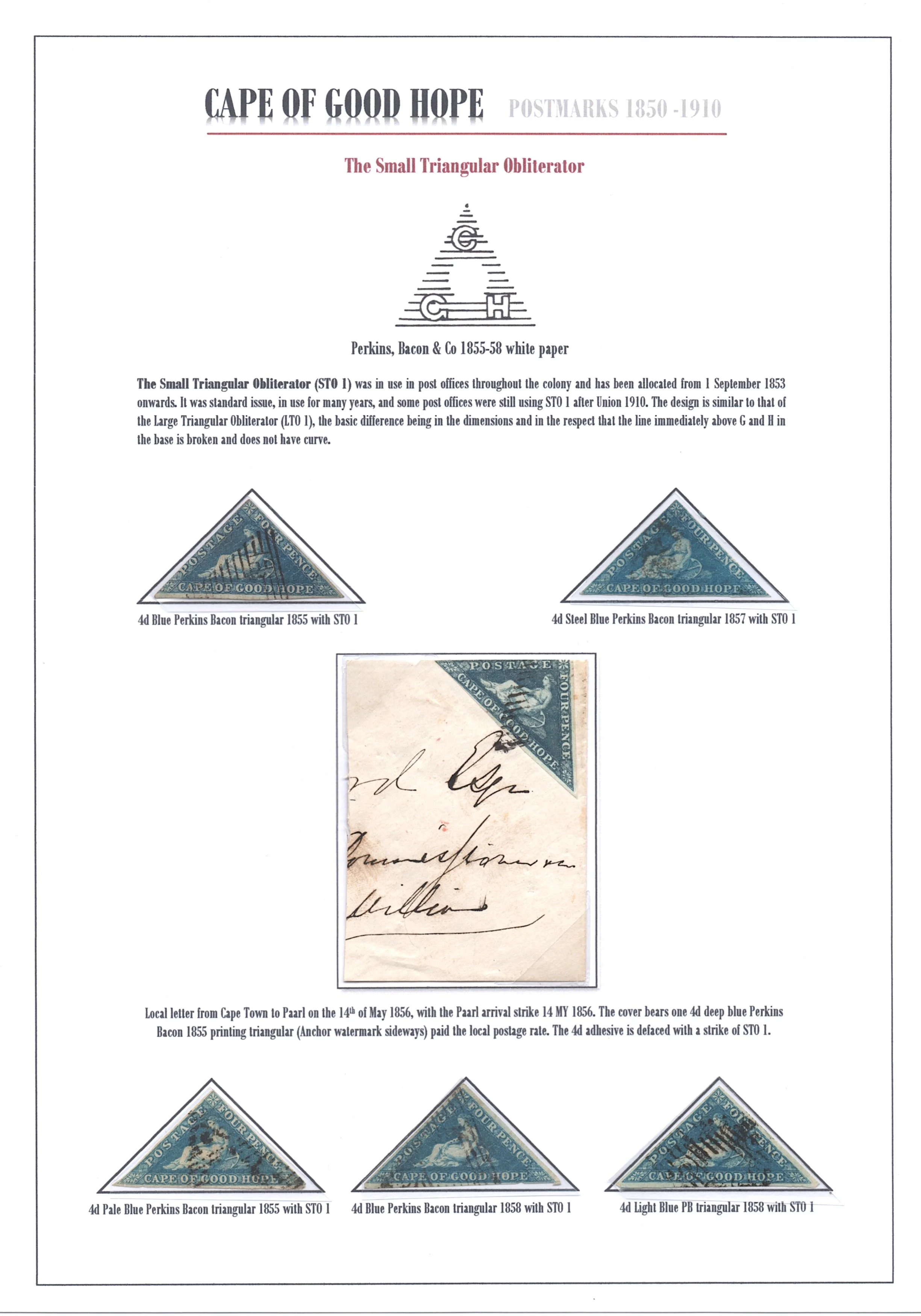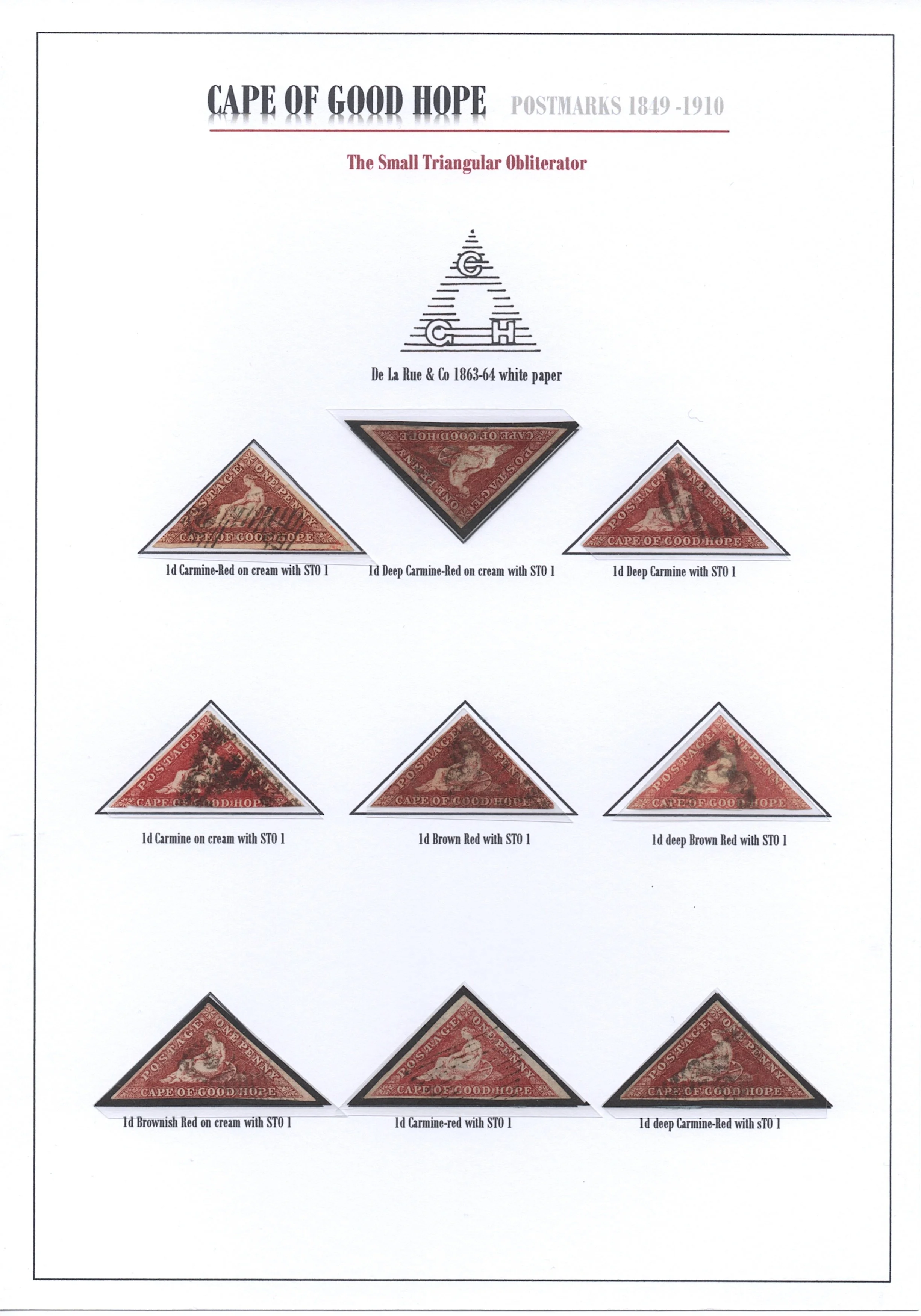CAPE OF GOOD HOPE
POSTMARKS 1850-1910
The Cape of Good Hope, a strategically vital point at the southern tip of Africa, witnessed a transformation in its mail services during the 19th and early 20th centuries. From the colonial era through to its role as a burgeoning British colony, this collection explores the evolution of postal services in this region, highlighting the challenges and innovations that marked its mail history.
Colonial Beginnings
In the mid-19th century, the Cape of Good Hope was a Dutch colony under British rule. The need for an organized mail system became evident as trade, governance, and the movement of people increased.
The Penny Postage System
In 1853, the Cape introduced the Penny Postage system, inspired by Sir Rowland Hill's postal reforms in Britain. This innovation allowed individuals to send letters within the colony at a fixed, affordable rate of one penny per half-ounce. It was a revolutionary step towards making postal services accessible to the wider population.
Challenges of Geography
The geography of the Cape posed significant challenges to the postal system. Vast distances, rugged terrain, and unpredictable weather made mail delivery a formidable task. To overcome these obstacles, postal authorities introduced stagecoach and wagon routes that crisscrossed the colony, connecting remote regions with urban centers.
The Railway Revolution
The advent of railways in the late 19th century dramatically improved mail transportation. The Cape Colony's railway network expanded rapidly, allowing for faster and more reliable delivery of mail between towns and cities.
Postal Innovations
The Cape of Good Hope was not immune to the broader global postal innovations of the era. The introduction of adhesive postage stamps, telegraph services, and postal money orders all played a role in modernizing and streamlining the mail system.
International Connectivity
As a British colony, the Cape was connected to the global postal network. The establishment of regular steamship services further facilitated international mail exchange. The Cape became a pivotal point for mail transiting between Europe, Asia, and Australia.
Conflict and Change
The late 19th century saw the Cape embroiled in conflicts such as the Anglo-Zulu War and the Second Anglo-Boer War. These conflicts disrupted mail services, but the postal system proved resilient, adapting to the exigencies of wartime.
Union and Beyond
In 1910, the Cape of Good Hope was unified with other South African colonies to form the Union of South Africa. This event marked a significant turning point in the history of its postal services, as the new union sought to harmonize and centralize its mail systems.
The history of the mail of the Cape of Good Hope from 1850 to 1910 is a testament to the importance of postal services in connecting far-flung regions and fostering social, economic, and political ties. The Cape's postal journey reflects a broader global trend toward modernizing and democratizing mail systems during the 19th century, ultimately paving the way for more efficient communication in the 20th century.
CAPE OF GOOD HOPE POSTMARKS -collection is one of my old collection, it includes the years from 1850 to 1910. There are at the moment around 120 old collection pages, but only few “exhibition pages” from these years already made - the actually number of the exhibition pages will be around 80 A4 pages, and I will add them here, one at the time, as soon as I am able to finalize them. My timetable with this collection is 09/2025.

